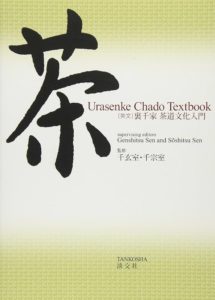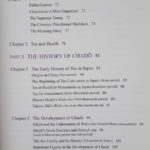
This was intended to be the last post of 2024, but I suppose it’ll just have to be the first post of this year (four months in). This copy was leant to me by a friend back in July of last year, but I plan to add to my own shelf in time. An excellent resource to those starting out in chanoyu, this book details the theory and history of the art, but isn’t a practical guide. Rather, it stresses the importance in chanoyu of learning the practice from a teacher, and how it isn’t meant to be learnt through written works. I’ve noticed this point across a few works I’ve picked up. However, this publisher does also put out a set of three practical guides (likely meant to be used in tandem).
I’ve been studying the basics of Urasenke under a friend for a while now, so I’ve been eyeing the three practical Urasenke guides, as it would be useful to have more diagrams to work off of when practicing in my own time between classes. My main hope is to grasp the basics of the Head Guest role.
This book is broken into five parts, each going over the significance, defining principles, history, and setting of chanoyu, with final sections on implements, an overview of temae, and a resource chapter with seasonal wakashi and flower arrangements, as well as family trees and a history timeline to accompany Part II of the book. It also includes a summary breakdown of the official ‘report card’/’levels’ of chanoyu for students looking to join officially.
Part I – This section outlines the principles of the practice, with some basic concepts and definitions. A lot of it is translating poems and anecdotes penned by masters in order to further expand upon chanoyu’s meaning and role in society.
Part II – Covers the history and formation of chanoyu prior to Rikyu, and then the effect he had on it and his legacy. It’s an excellent resource, and further expanded upon with a detailed timeline and family tree at the end of the book.
Part III – This section details the setting and implements, covering a lot of important vocabulary, helped along with detailed diagrams of matt layouts and gear. This and the final Part IV alone make this book worth picking up just for reference material. I regret not taking a few photos of this section to better represent in this post.
Part IV – Though this isn’t an exhaustive list by any means, this section helps introduce the different temae and their purpose. I didn’t take many notes on this section—I wonder if it couldn’t have been rolled into other Parts.
Part V – This is the section I took the most photos of. It contains reference material for temae—what wagashi and flowers are appropriate for different seasons—and also tables and timelines for Parts I and II.
Overall, this is a very slim volume, and its main use is to serve as an introduction to new students to the history of the artform they’re looking to learn. Though it’s a nice volume to pick up on its own, I think for those serious about the art, it’s worth picking this book up alongside Chanoyu Vocabulary: Practical Terms for the Way of Tea, as well as perhaps Urasenke Tea Procedure Guidebook I. Though I can see people passing over this volume altogether for the three Guidebooks and the Dictionary, as they’d serve as more direct guides.
Its secondary use is as a beginner’s reference tool to fall back on for those still becoming familiar with the different seasons associated with chanoyu, and the wagashi and flowers associated with them. I’m sure as people move along in their practice, they’d also move beyond needing to reference the basics written here. (There are quite a few books that focus only on wagashi and flower arrangements for chanoyu, much more in-depth than this.)
For those looking for more of an in-depth essay on the history and cultural purpose of chanoyu, and are not interested in becoming students, there are better books than this one. Tea in Japan: Essays on the History of Chanoyu is one.
This book runs for usually under $30USD (before shipping), though it becomes an investment if you intend to pick it up with all the companion volumes. A cursory search shows several listings on ebay, amazon, and abebooks, so it’s at least not rare by any means.
I’ve included quick photos of the table of contents for reference, since one doesn’t seem to be included in the amazon listing.
 |
 |
 |
 |




Leave a Reply
You must be logged in to post a comment.